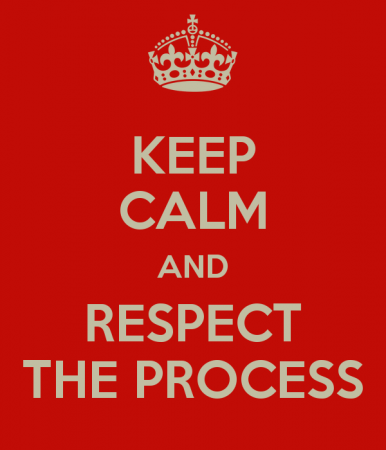“What the new year brings to you will depend a great deal on what you bring to the new year.” – Vern McLellan
As if social media and societal buildup haven’t served as reminders enough, we’re nearing the end of the entire decade, preparing to herald in the next ten years with our upcoming New Year’s Eve celebrations. This shift, of course, has been advertised as a momentous occasion. Everywhere you turn, tweet, or scroll, you’ll typically see people talking about “the turn of the decade” as if they, themselves, are about to undergo a drastic change alongside the annual calendar. All this talk sounds far more extreme than the reality: for instance, saying, “we’ll enter the next month in two weeks” or “the day after December 31st is January 1st” or “nothing but the calendar date will be different. Nothing will shift as the clock strikes twelve. Nothing around us will magically change—that is, unless we make it.”
Typically, our way of making a change in the New Year is through our own New Year’s Resolutions—infamous for being completely forgotten by the end of the following spring. Maybe we want to learn a new language, master a new skill, immerse ourselves in a new culture, or form a new healthy habit. Efforts to attain each of these goals are certainly admirable, but more often than not, they end up being fruitless.
Typically, New Year’s Resolutions place a disproportionate amount of emphasis on end results compared to the actual steps required to attain them. Therein lies the issue; we walk into the New Year with wide eyes and no game plan—our goals seem more and more insurmountable as we push them off to the next week, then the next month, then the next season, until we abandon the resolution altogether. This is why New Year’s Resolutions get a bad rep: we set not only them, but ourselves, up for failure.
Instead of letting such a trend discourage us, we should feel motivated by the prospect of setting achievable goals. The key to this lies in understanding both why and how we set them.
First, we need to make clear to ourselves why we’re creating a particular New Year’s Resolution. Learning a new language, for instance, sounds interesting enough, but why are we considering learning it in the first place? Perhaps it’s to be able to fluently converse with an inlaw, order food at ethnic enclaves, prepare for a trip abroad, or simply to pick up the new skill. We may also find it beneficial to connect our goals to our values. Keeping with the example of language learning, perhaps our goal stems from our desire to become more globally aware citizens, or from our inherent intellectual curiosity. No matter the individual answer, one thing’s for sure: knowing exactly what we’re looking to gain out of a New Year’s Resolution gives us all the more motivation to actively and continually pursue it in the next twelve months.
After we’ve decided exactly why we want to fulfill a certain New Year’s Resolution, we ought to strategically devise a plan of action to accomplish it. We can do this by following the acronymic SMART goal format, which suggests that all our goals be Specific, Measurable, Attainable, Realistic, and Time-Sensitive.
 One of the main issues with stereotypical New Year’s Resolutions is their vagueness and unconquerable breadth. Let’s say we want to undertake the “learn a new language” example from above—which remains in itself, difficult to define and therefore approach. We may think that specifying the actual language—for instance, promising that we’ll “learn Italian”—satisfies the Specific SMART condition, but even that is too big a task to tackle. What do we mean by “learn” Italian? Do we wish to read it? To speak it? Do we wish to understand specific vocabulary, or acquire a rudimentary, conversational mastery of Italian? It’s important to define these parameters before we initiate a task we don’t even grasp the meaning of. And though it may seem counterintuitive to the point of focusing more on actions rather than outcomes, we may find it beneficial to phrase our goals based on the end-results we wish to obtain. Instead of “I want to learn Italian,” we may say, “I want to be able to speak basic, conversational Italian with no American accent.” This clearly irons out the specifics of “learning Italian”, and makes it seem far more manageable.
One of the main issues with stereotypical New Year’s Resolutions is their vagueness and unconquerable breadth. Let’s say we want to undertake the “learn a new language” example from above—which remains in itself, difficult to define and therefore approach. We may think that specifying the actual language—for instance, promising that we’ll “learn Italian”—satisfies the Specific SMART condition, but even that is too big a task to tackle. What do we mean by “learn” Italian? Do we wish to read it? To speak it? Do we wish to understand specific vocabulary, or acquire a rudimentary, conversational mastery of Italian? It’s important to define these parameters before we initiate a task we don’t even grasp the meaning of. And though it may seem counterintuitive to the point of focusing more on actions rather than outcomes, we may find it beneficial to phrase our goals based on the end-results we wish to obtain. Instead of “I want to learn Italian,” we may say, “I want to be able to speak basic, conversational Italian with no American accent.” This clearly irons out the specifics of “learning Italian”, and makes it seem far more manageable.
The Measurable condition of the SMART acronym challenges us to operationalize our goal’s terms. This aids in our understanding of the smaller steps we must take in order to fulfill our overall resolution. Operationalizing our goal—or breaking it down into quantifiable milestones—also gives us a way to hold ourselves accountable and keep tabs on our progress throughout our personal journeys. It might involve thinking about how much money we need to save up per week for a certain product, how many minutes per day we need to devote to a certain activity, or how many tasks we need to cross off per month in order to stay on our path to resolution success. In terms of speaking basic, conversational Italian with no American accent, we may break this down by skills per month: for instance, “I want to memorize one hundred words and master one grammatical tense in Italian each month.”
The Attainable SMART condition seems quite self-explanatory. To ensure that our goal is attainable, we should consider the semantics of the plan we came up with to attain it. If we follow the outline of milestones we laid out, will we actually be able to accomplish our New Year’s Resolution? We want to be able to answer this question with absolute certainty—hopefully, in the heavy affirmative. Let’s review the Italian fluency example: how would memorizing one hundred words and mastering one grammatical tense per month eventually result in our ability to converse in the language with no American accent? Well, assuming we’re studying the thousand most-popular words in Italian, and learning each of the tenses so that we’ll be able to refer to things in the present, past, and future in conversation, we should be able to reach our goal in twelve months by adhering to this framework. It’ll certainly take time, devotion, practice, and oration, but we’ve successfully broken it down into relevant steps and smaller goalposts. Therefore, we can rest assured that this goal is, indeed, attainable.
Furthermore, we want to make sure that our goal for the year is Realistic. This is another SMART area that New Year’s Resolutions often fall short in. It isn’t fair to ourselves to set an impossible goal that dooms us to failure. Chances are, we won’t acquire perfect fluency in Italian in one year—we certainly won’t have a proficiency to rival our first-language, which we’ve likely applied and developed through more than a decade of schooling. However, if we practice and remain diligent in our personal plan and practice, we should be able to at least converse in Italian with proper inflection and pronunciation.
Finally, the SMART goal acronym declares that goals are Time-Sensitive endeavors. New Year’s Resolutions, in particular, seem to have a clear deadline: the following year’s end. However, this gratuitous time period ends up being abused by over-ambitious goal-setters, who may see all that time as an excuse to slack off. Combatting this laziness entails setting “due dates” for the personal milestones we’ve determined are necessary to pass along the way to our goals. For example, in our hypothetical Italian second-language pursuit, perhaps we’ll want to master interrogative phrases and the present tense by February, kitchen vocabulary and the past tense by June, street terms and the future tense by November. By adding a time limit to each of these smaller steps, we’re giving ourselves further incentive to make the most out of our Italian practice, and mitigating the risk of pushing things off to the very last minute—or eventually forgetting about our goal completely. This way, by the end of next December, we’ll be able to have productive, more-or-less free-flowing conversations with our Italian friends and their families, and we’ll know that much more about Italian culture.
The trick to creating successful New Year’s Resolutions is not making them seem like New Year’s Resolutions; what I mean by that is, don’t make them seem grand and unattainable. Set SMART goals. Do this strategically. Stick to your game plan. Don’t lose motivation, don’t lose hope, and don’t lose sight of why you set out to accomplish your resolution in the first place.
All that being said, I wish everyone the best in the new year, and I hope we can all successfully attain each of our individual New Year’s Resolutions, devoting our time to improving both ourselves and our communities.
Happy holidays! Here’s to a new decade, new year, new month—whatever you want to call it—filled first and foremost with new friends, new skills, new knowledge, and most of all, new growth.


Recent Comments